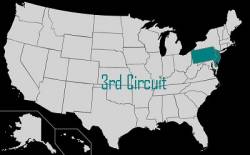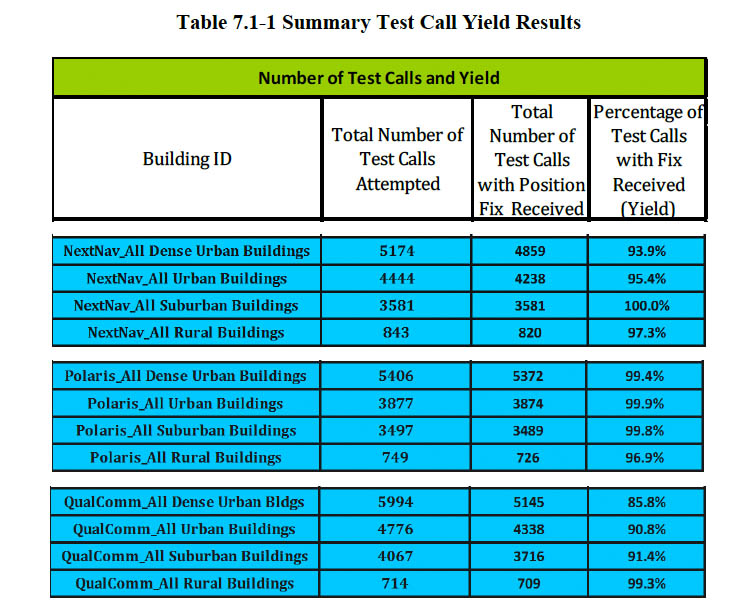
The Federal Communications Commission (FCC) today (February 20, 2014) proposed rules to help emergency responders better locate wireless callers reporting emergencies.
The Federal Communications Commission (FCC) today (February 20, 2014) proposed rules to help emergency responders better locate wireless callers reporting emergencies.
The proposed updates to the Commission’s Enhanced 911 (E911) rules respond to Americans’ increasing use of wireless phones to call 911, especially from indoors, and take advantage of technological developments that allow for more accurate location information to be transmitted with 911 calls. Specifically, the rules would initially set horizontal and vertical accuracy requirements that would narrow down the locations of callers to within a particular building and a specific floor.
The current E911 rules require wireless providers to automatically transmit emergency callers’ location — within certain parameters for accuracy — to 911 call centers (so-called “public safety answering points”). These rules, which were adopted in 1996 and underwent their last major revision in 2010, enable wireless providers to meet this accuracy standard based solely on the performance of outdoor wireless 911 calls, typically using GNSS positioning technology.
The FCC’s rules require wireless carriers to identify an emergency caller’s location for a specified percentage of 911 calls within a range of 50 to 150 meters for carriers that use handset-based technology — typically GPS-based, and 100 to 300 meters for carriers that use network-based technology, such as angle-of-arrival, time-difference-of-arrival, or cell-ID. In July 2011, the FCC announced that after the conclusion of an eight-year implementation period in early 2019, it will sunset the existing network-based rule and require all wireless carriers to meet the more stringent location accuracy standards in the handset-based rule.
Many Americans are replacing landlines in their homes and businesses with wireless phones, and calling patterns are changing. For example, reports indicate that nearly 73 percent of 911 calls in California are made from wireless phones, and approximately 80 percent of all smartphone use occurs indoors, where GNSS signal reception is less reliable due to blocked, attenuated, and reflected signals.
Recent reports from PSAPs indicate a declining proportion of E911 calls are providing location information about the caller.
In light of these trends and at the urging of companies offering new types of indoor location technologies, the FCC proposed changes to its E911 rules to include indoor location accuracy. Of particular concern is location accuracy in challenging environments such as large multi-story buildings, where first responders are often unable to determine the floor or even the building from which the 911 call originated.
Determining the location of indoor wireless callers is more challenging than determining an outdoor location, but innovation and technological developments in this area are making it easier to locate mobile devices wherever they are, an agency news release stated.
The FCC proposes in the near term that wireless providers meet interim location accuracy metrics that would be sufficient to identify the building for most indoor calls. The commission also proposes that wireless providers deliver vertical location information that would enable first responders to identify the floor level for most calls from multi-story buildings.
In the long term, the federal agency seeks to develop more granular indoor location accuracy standards that would require identification of the specific room, office, or apartment from which an E911 call is made. These standards would rely on continued progress in the capabilities of indoor location technology and the increasing deployment of in-building communications infrastructure.
The FCC also proposed additional steps to strengthen its existing E911 rules to ensure delivery of more timely, accurate, and actionable location information for all wireless 911 calls. In addition to these measures, the commission is seeking comment on whether to revisit its timeframe for replacing its current handset- and network-based location accuracy standards with a single standard in light of technological developments.
While seeking comment on its proposals, the commission also encouraged industry, the public safety community, and other stakeholders to work collaboratively to develop alternate proposals for its consideration. The FCC emphasized that its ultimate objective is that all Americans — whether they are calling from urban or rural areas, from indoors or outdoors — receive the support they need in times of emergency.
Today’s action by Notice of Proposed Rulemaking (FCC 14-13) was approved by Chairman Tom Wheeler and commissioners Mignon Clyburn and Jessica Rosenworcel with commissioners Aji Pai and Michael O’Rielly approving in part and concurring in part.





